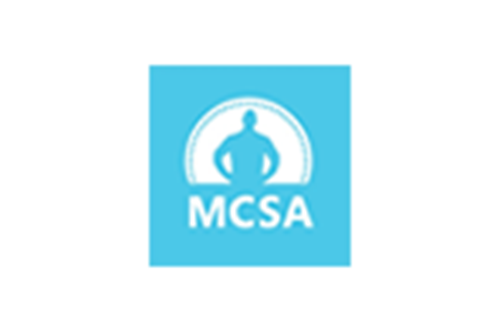A margin rate is always the same as margin interest in a trading context. If you're a short-term trader, the interest due at the close of your trade might be minimal. But if you're a long-term trader, it can become a more serious consideration. It's one fee that you have to take into account whenever you make a trade on margin.
But if you bought the shares through a margin account, you’d only need to have $25,000 in your account to purchase them--the other $25,000 would be funded by margin, which is borrowed from your broker. The most common way to buy stocks is to transfer money from your bank account to your brokerage account, then use that cash to buy stocks (or mutual funds, bonds and other securities). A margin call is when the equity in a margin account is too low to meet the maintenance margin requirement. When this happens, the broker requires the account holder to deposit enough money to meet the maintenance margin, which may cause a scramble for cash. Under Reg T, a Federal Reserve Board rule, you can borrow up to 50% of the purchase price of securities that can be purchased on margin, also known as initial margin.
However, its accuracy, completeness, or reliability cannot be guaranteed. Does the threat of a margin or maintenance call make you nervous? Many or all of the products featured here are from our partners who compensate us. This influences which products we write about and where and how the product appears on a page. Here is a list of our partners and here’s how we make money. Past performance of a security or strategy does not guarantee future results or success.
- Note that the buying power of a margin account changes daily depending on the price movement of the marginable securities in the account.
- The required margin after opening the position is known as the “maintenance margin” level.
- It even gives these customers the first $1,000 in margin interest-free.
- Though new investors may sometimes find themselves having to pay a margin rate, it is generally the providence of professional stock traders and sophisticated investors.
- Options trading subject to TD Ameritrade review and approval.
For most margin accounts, the loan is open until the securities are sold in which final payments are often due to the borrower. You get more bang for your trading buck--or at least, that's the idea. With margin trading, you're only required to deposit a percentage of the notional value of a given security, which can increase your buying power. Through margin, you put up less than the full cost of a trade, potentially https://www.investorynews.com/ enabling you to take larger trades than you could with the actual funds in your account. Should investors not be able to contribute additional equity or if the value of an account drops so fast it breaches certain margin requirements, a forced liquidation may occur. This forced liquidation will sell the securities purchased on margin and may result in losses to satisfy the broker’s requirement.
Is Margin Trading Right for You?
Even after she sells the remaining shares to pay down the loan, she still owes an additional $1,000. That amounts to a total loss of $4,000 (her original $3,000 investment plus an additional $1,000 to satisfy the terms of the loan). Buying on margin has some serious appeal compared with using cash, but it's important to understand that with the potential for higher returns, there's also more risk. Margin trading is a form of leverage, which investors use to magnify their returns. However, if the investment doesn't go as planned, that means losses can be magnified, too. The investing information provided on this page is for educational purposes only.
Be sure to understand all risks involved with each strategy, including commission costs, before attempting to place any trade. Clients must consider all relevant risk factors, including their own personal financial situations, before trading. Adjustable-rate mortgages (ARM) offer a fixed interest rate for an introductory period of time, and then the rate adjusts. To determine the new rate, the bank adds a margin to an established index. In most cases, the margin stays the same throughout the life of the loan, but the index rate changes.
Outside of margin lending, the term margin also has other uses in finance. For example, it is used as a catch-all term to refer to various profit margins, such as the gross profit margin, pre-tax profit margin, and net profit margin. The term is also sometimes used to refer to interest rates or risk premiums.
What Does It Mean to Trade on Margin?
If the stock dropped and you sold it for $45 per share, you’d realize a loss of 20%--double what the loss would be if you paid for the stock entirely in cash. And don’t forget, the whole time you’re holding a margin loan balance, you’re incurring interest on that amount. In a losing scenario, the stock takes a hit and the share price drops from $30 to $20. The value of her investment falls from $6,000 to $4,000, and after she repays the loan, she has just $1,000 -- a $2,000 loss. Had she invested with only her cash, her losses would only be half that, at $1,000.
Note that the buying power of a margin account changes daily depending on the price movement of the marginable securities in the account. Again, with more securities in hand, increases in value have greater consequential outcomes because you’re more heavily invested using debt. On the same note, if the value of the securities posted as collateral also increase, you may be able to further utilize leverage as your collateral basis has increased. This is not an offer to buy or sell any security or interest.
The money that the investor borrows is referred to as the margin. The margin rate is how much the broker charges to borrow that money. Margin loans, like credit cards, can be a helpful leveraging tool. For investors who understand the risks and have ample investing experience, margin trading can enhance profits and open up trading opportunities. Just be sure to heed all of the margin loan warnings and don't get in until you know exactly what you're getting into.
What do I need to know about Reg T and other margin rules?
Let's say you open a margin account and deposit $5,000 in cash, for example. Your broker would allow you to buy $10,000 worth of stock in the account, and they would charge you an annual interest rate on the margin loan. Futures initial margins are set by the exchanges (firms may hold higher house requirements) and vary depending on the commodity (market volatility is also a factor). For example, January 2024 CME Group WTI Crude Oil futures required initial margin of $12,342, or roughly 17% of the total contract value. The contract was trading around $72 per barrel in mid-December 2023, meaning one futures contract covering 1,000 barrels of oil had a notional value of about $72,000.
What is margin trading?
We do not manage client funds or hold custody of assets, we help users connect with relevant financial https://www.forex-world.net/ advisors. That's to connect your broker to a dedicated trading platform like StocksToTrade.
Securities and Exchange Commission as an investment adviser. TD Ameritrade sits at the other end of the margin rate spectrum. Compared with the lower rates of Robinhood and Interactive Brokers, this can seem like a bad deal. Because a margin loan can be asked back at any time through a margin call, there's little risk for the brokerage. The broker call rate is the amount that the broker pays to its bank or financial institution.
Please read the Risk Disclosure Statement for Futures and Options prior to trading futures products. Many investors are familiar with margin or margin trading but may be fuzzy on exactly what it is and how it works. That’s understandable because margin rules differ across asset classes, brokerages, and exchanges. At that point https://www.dowjonesanalysis.com/ an investor has from a few hours to a few days to bring the account value up to the minimum maintenance level. She can do that by depositing more cash or selling equities (or closing option positions) to increase the amount of cash in the account. That means the value of her initial $6,000 investment grew to about $8,000.






























 WhatsApp
WhatsApp